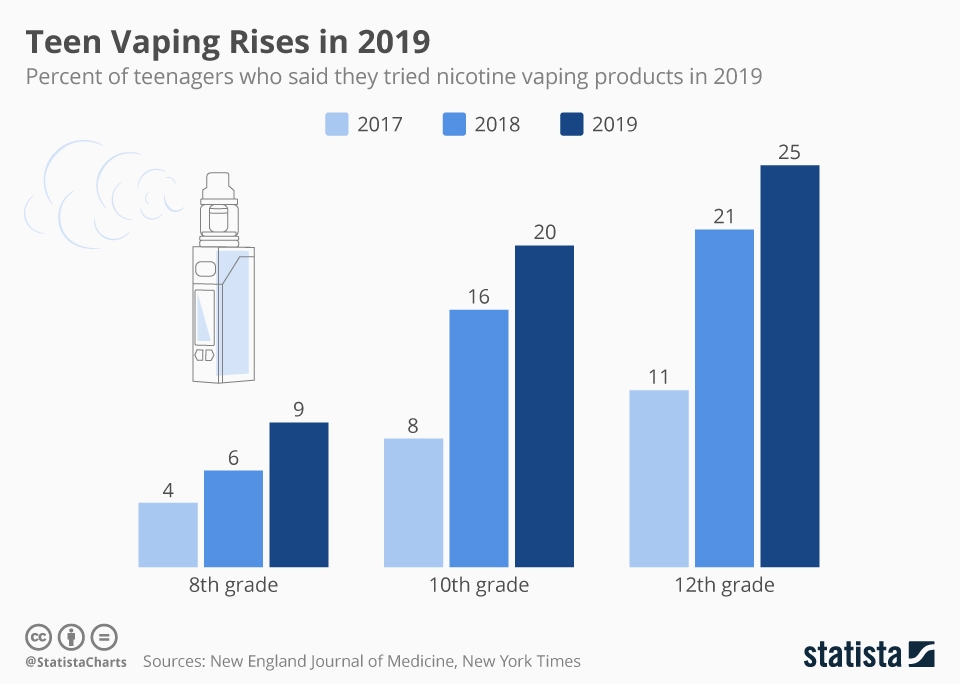Amid Flavored-Vaping ‘Ban’, Smoking Loses Its Cool
13% of Americans smoke e-cigarettes, but that is nothing compared to China, where 1-in-5 ‘vape’…
You will find more infographics at Statista
Worse still, at least 25 percent of 12th grade students have tried nicotine vaping products, according to a poll conducted by New England Journal of Medicine, cited by the New York Times.
You will find more infographics at Statista
But now, the Trump administration on Thursday announced plans to bar sales of flavored e-cigarette cartridges, except for menthol and tobacco flavors.
“The United States has never seen an epidemic of substance use arise as quickly as our current epidemic of youth use of e-cigarettes,” Health and Human Services Secretary Alex Azar said in a statement about the change, which goes into effect in 30 days.
The FDA released its statement announcing the new policy on Thursday, saying the move was not a “ban” but an announcement prioritizing the agency’s law enforcement powers against tobacco products. The agency “has attempted to balance the public health concerns,” the statement said.
Will this ‘ban’ push smokers back to ‘real’ cigarettes?
While lighting up a cigarette was once considered a sign of class and sophistication or, at the very least, an act of coolness, smoking seems to have lost some of its spark in recent years. According to a new report published by the Federal Trade Commission, cigarette sales in the United States dropped to 216.9 billion in 2018, the lowest level since the FTC started tracking cigarette sales in 1967.
As Statista’s Felix Richter shows the the chart below, cigarette sales have declined more or less continuously over the past 40 years, dropping by 66 percent since peaking in the early 1980s.
You will find more infographics at Statista
Over the same period, cigarette advertising and promotional spending increased from $1.2 billion in 1980 to $8.4 billion in 2018, most of which came in the form of price discounts for retailers and wholesalers.
Interestingly, the number of cigarette smokers in the United States, while also declining, has not dropped at a similar rate as cigarette sales over the past four decades. According to the Centers for Disease Control and Prevention (CDC), an estimated 34.2 million adults in the U.S. were smoking cigarettes in 2018, down 34 percent from 51.6 million in 1980.
Tyler Durden
Fri, 01/03/2020 – 22:05
via ZeroHedge News https://ift.tt/39DlGuU Tyler Durden


